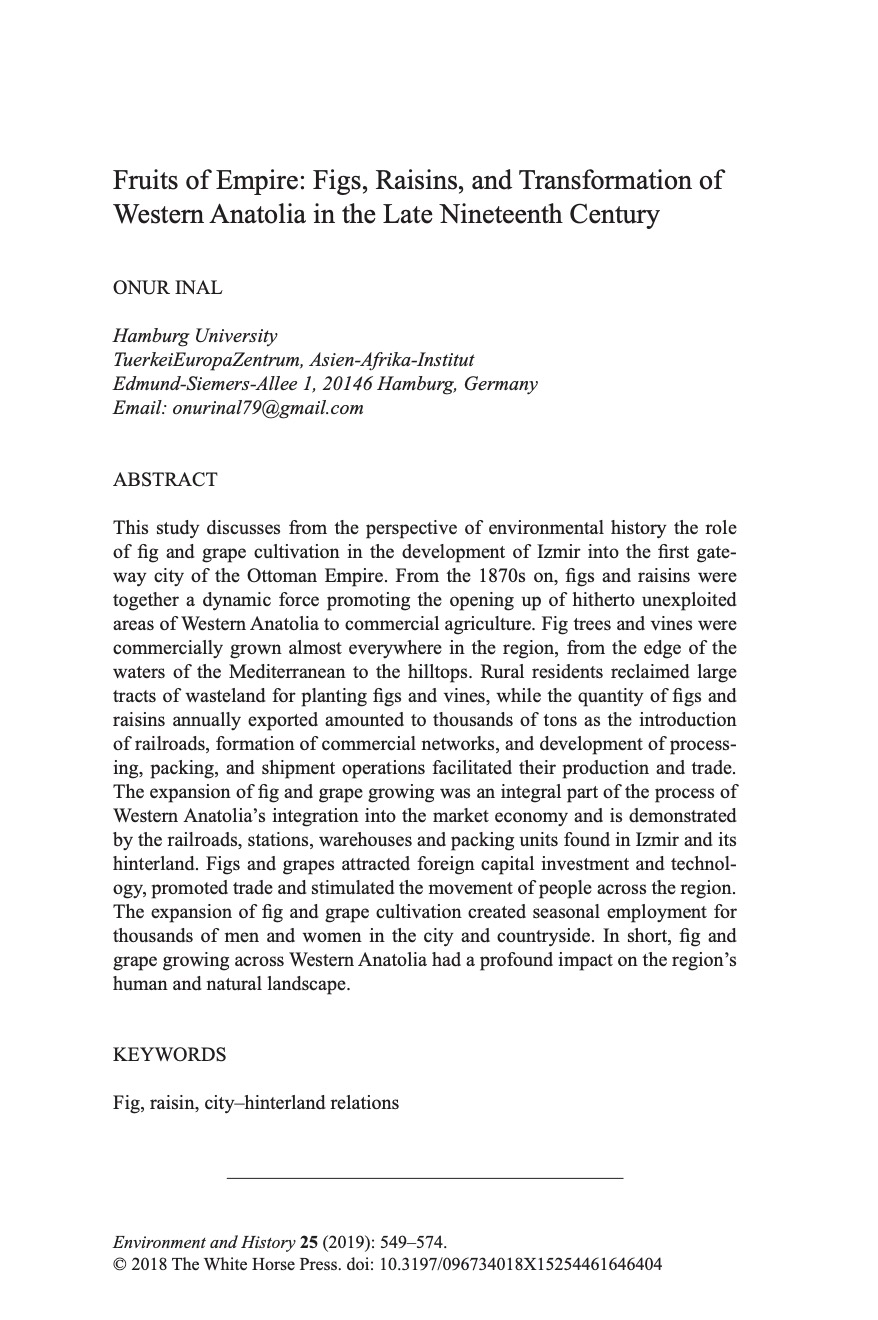İmparatorluğun Meyveleri: İncir, Kuru Üzüm ve Ondokuzuncu Yüzyılın Sonlarında Batı Anadolu'nun Dönüşümü
Fruits of Empire: Figs, Raisins, and Transformation of Western Anatolia in the Late Nineteenth Century
-
This study discusses from the perspective of environmental history the role of fig and grape cultivation in the development of Izmir into the first gateway city of the Ottoman Empire. From the 1870s on, figs and raisins were together a dynamic force promoting the opening up of hitherto unexploited areas of Western Anatolia to commercial agriculture. Fig trees and vines were commercially grown almost everywhere in the region, from the edge of the waters of the Mediterranean to the hilltops. Rural residents reclaimed large tracts of wasteland for planting figs and vines, while the quantity of figs and raisins annually exported amounted to thousands of tons as the introduction of railroads, formation of commercial networks, and development of processing, packing, and shipment operations facilitated their production and trade. The expansion of fig and grape growing was an integral part of the process of Western Anatolia's integration into the market economy and is demonstrated by the railroads, stations, warehouses and packing units found in Izmir and its hinterland. Figs and grapes attracted foreign capital investment and technology, promoted trade and stimulated the movement of people across the region. The expansion of fig and grape cultivation created seasonal employment for thousands of men and women in the city and countryside. In short, fig and grape growing across Western Anatolia had a profound impact on the region's human and natural landscape.



